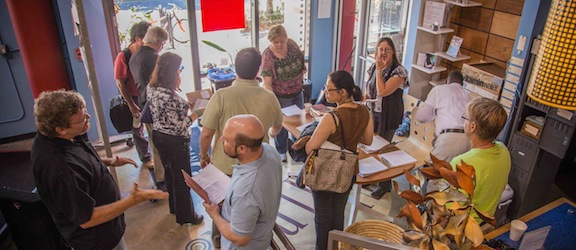As a design research firm, we do not jump to solutions. Instead, we begin with researching the problem area and dreaming big. Our development process revolves around a series of rapid prototypes, which are vetted through playtesting events that bring the target audience to interact with the experience very early in the design development process.
The lab is the backbone of our design-development process; supporting our consulting work, by dreaming up ideas that are pushing the edge of creative media implementation and design. In the lab, we are able to test these ideas in the Innovation Playtank, where real users interact with the product at various stages of development - This allows us to explore the core components and theories behind the design, and to make surprising discoveries that would have been missed if we jumped straight into production. The insights gained from play-testing often have a radical impact on the next stage of design-development.
Tools of the Trade
Metaprogramming: We work with a skilled group of interactive-actors in order to prototype the design before we write a single line of code. By working with actors who specialize in improvisation and audience interaction, we can directly see what the experience needs to accomplish in order to engage the players in the way we intended. The actors are able to show us a range of behaviors and fidelity of interaction, so that we can focus our efforts on what makes the biggest impact.
Data-Capture: Our innovation is to couple the design of the experiential content with real-time assessment of the user’s performance. This is done through our grounded theories of InterPLAY Theory with the latest perceptual computing technology in order to translate behavior into meaningful adaptive experiences. This process is defining a new generation of evaluation methods and tools.
Our Innovation Playtank brings a prototype to the public, in order to see how a real audience interacts with the experience and with each other. We like to prototype at different stages of development, starting with paper prototypes and physical artifacts; we have seen that a great deal of valuable information can be learned from prototyping early, so that the design is still flexible and open to adapting to whatever we learn from watching real users engage the product or experience.



